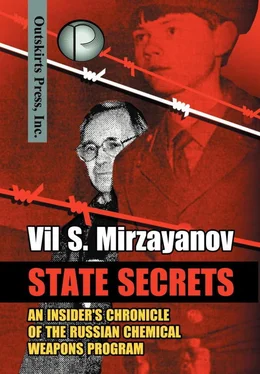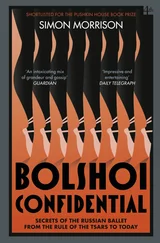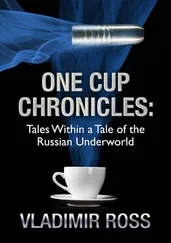Many attempts were made at Post Office Box 702, to master the production of ethylene oxide from ethylene, but none were successful, including the unfortunate start-up of the factory section in the town of Salavat, Bashkortstan.
In 1967, when the Kazan Plant for Organic Synthesis had yet to master the latest improved technology, the annual worldwide production of ethylene oxide exceeded 60,000 tons.
As the creator of the chromatographic methods for analyzing reaction mixtures, I also participated in the long drawn out set-up of the plant in Kazan. The “Government Commission” on the start-up was under the leadership of Oscar Diment, who was the head of the TOS Department. He had been transferred there from the Ministry of Chemical Industry, where he had worked for a long time as Chief Engineer of the Main Administration “Soyuzorgsynthesis”, which our Post Office Box was directly subordinate to. The Commission was composed of such ordinary members, that it appeared to me that Guskov suffered greatly since he did not serve as its chairman.
At work they explained that the alleged productivity of ethylene oxide fluctuated greatly, showing a tendency to constantly degrade. Guskov decided to investigate the reason for this, by analyzing the registered indices of the constants involved in the process (temperature of the reactor, maintenance of humidity in the reactant gas and others). He chose me to work as his assistant on this matter, and we worked for 15 out of 24 hours, unwinding the graphing tape that was several hundred meters long and plotted productivity graphs, using various parameters. Finally we found the reason for the declining efficiency of the working reactor. (Incidentally it was loaded with more than 10 tons of pure silver, since at that time in the U.S.S.R. it was not possible to manufacture a catalyst which covered the surface of an inert solid. We had 3 reactors filled with this quantity of silver.)
On the morning of the scheduled start-up, after finishing all the necessary preliminary work, a huge crack was found in the cup (the top) of this reactor. This was a terrible disappointment, since it proved that the reactor cover had been manufactured from ordinary steel, known as “steel 3”. Notorious “steel 3” was something between cast iron and simple iron, suitable perhaps for manufacturing our celebrated Soviet tractors, which broke even before they began to plough the fields of the kolkhozes (collective farms).
Someone in the Construction Bureau had decided to “economize” on materials for the reactor cup, although its body was designed and manufactured from high quality stainless steel. In this case, the planning and preparations of the Soviet system meant the loss of almost half a year while waiting for the blunder to be corrected, despite an encouraging speech about the mastery of important matters for “defense” production.
In any case, our group managed to accomplish the production of this important precursor used for manufacturing Substance 33, at the Novocheboksary Chemical Industrial Plant. Guskov learned an important lesson from this: never to give up his place as the chief of a start-up commission, guaranteeing him numerous rewards and a good reputation, which usually rained down on him, purely by luck.
Truly Guskov became more experienced in this kind of business, being able to choose, if a quick victory was in greater doubt, or he could wait a bit if it were more convenient for him. In particular, at the 1971 start-up of the factory division for producing diethylaminoethyl-mercaptan at the Novocheboksary Chemical Plant, he conceded this role to Vladimir Rostunov, Chief Engineer at the Main Administration of the Ministry of Chemical Industry of Russia -”Soyuzorgsynthesis”. Ultimately in 1974 he reached his goal and received this Prize for the “creation of Soviet V-gas”.
Now and then, we were surprised by the realization that Guskov managed his duties pretty well, even though he was strongly devoted to alcohol. Once in a while he went on a real bender at work. Sometimes, when he was barely standing on his feet, after drinking a lot of spirits in Brovkin’s lab, his younger drinking buddies usually would pull him through the check-point, in order to get him into the company “Volga” car and take him home.
I spent about a year working on the 1971 start-up of the Novocheboksary complex, with my assistants Vladimir Forov and Yury Bugrov. Literally all of the equipment was brought to us from GOSNIIOKhT and assembled there by my assistants and some workers from the Department of Analytical Chemistry. My GC methods of analysis of the reaction mixtures of ethylene sulfide and diethylaminoethyl-mercaptan (and of course the products) were successfully applied at the start-up and later utilized by the section. The start-up brigade from our enterprise, at that time bearing the new name of our institute – State Union Scientific Research Institute of Organic Chemistry and Technology (GOSNIIOKhT), was headed by Vadim Makhlin, an acquaintance of mine from our student days at MITKhT.
Our factory section was stunned by the sight of the huge buildings and apparatuses there. This plant had to guarantee the production of 20,000 tons a year of the final product of the chemical agent known as Substance 33. So, this is how we evaluated the politics of détente in the international arena, operating at that time!
Some heated arguments were inevitable, during that start-up time. Once, when my analysis showed that samples of the end product contained significant impurities, the chemical analysis showed a clean end product. When they finally started to show a purity of more than 100%, it became crystal clear that these results from chemical analysis were simply false, since the methods used to obtain them were not selective.
Our Guskov did not give up control of the end product – chemical agent Substance 33, and he reported only to the bosses. Before that, he did not participate at all in this technological research process. All of the technical methods used in the manufacturing process at the Novocheboksary complex were carried out by Department “T”, which was headed up by Professor Semeyon Lvovich Varshavski, who had garnered every imaginable Stalin and Lenin Prize.
Unquestionably he was a talented scientist, but it’s unfortunate that Varshavski dedicated himself to such an ignoble business as researching the technical production of chemical weapons. He introduced highly qualified engineers and successful organizers into his group, capable people who were able to use everything hidden from the eyes of those simpletons who sprouted out of the party machine, in order to organize the massive production of chemical weapons in the U.S.S.R. The production of sarin, soman and Substance 33 were organized directly under his scientific leadership.
However, at the time of the Novocheboksary start-up, it was completely obvious, that the top leadership of GOSNIIOKhT was trying in every possible way to limit Varshavski. There were some simple reasons for this. First of all, he had all of those awards and the leadership thought that it was time for him to stop, since as some of them said “the Moor has finished his business and must go away.” Also, he was vulnerable because of his answer on the celebrated “fifth point” of his questionnaire concerning nationality, namely he was Jewish.
The Start-up of the Novocheboksary Factory and the Downfall of Semeyon Varshavski
Department “T”, which was headed by Varshavski at that time, consisted of two large laboratories. The boss of one of these was Professor Varshavski himself, and the other was run by an energetic and talented man, Igor Sergievski, who died suddenly after the set-up of the Novocheboksary factory. Still, I think the first Soviet industrial-scale production of ethylene sulfide was successful, exclusively thanks to his service. I know he had proposed using potassium rodanide in a reaction with ethylene oxide for the synthesis of ethylene sulfide (a precursor to diethylaminoethyl-mercaptan). The groundwork for the technology of Substance 33 was accomplished by Yury Privezentsev, Igor Sergievski, Veronica Patrikieva and others. I remember how distressed Sergievski was about Guskov. “He’s a good man, but it’s clear that he is hanging around Novocheboksary only for the awards,” he said.
Читать дальше












